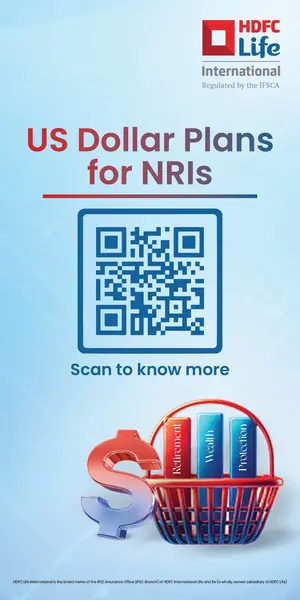Frank Catucci, CTO and Head of Security Research at Invicti Security, explains why the company stands out in the competitive web application security market.
How does Invicti’s approach to web application security differentiate itself from other solutions in the market?
Invicti’s approach to web application security differentiates itself from other solutions in the market in a few different ways.
First, I’d like to mention Predictive Risk Scoring and our unique AI approach to solving clients needs when trying to understand where to begin in their AppSec journey.
Predictive Risk Scoring augments the application scanning process by helping clients prioritize their web assets prior to scanning. It uses AI to calculate risk scores compiled from up to 220 data points that predict the highest severity vulnerability of each discovered website with a minimum 83% confidence level. The assigned risk scores then give you the means to rank your sites and gauge the overall potential risk of your web assets before you scan them. Using this information, you can focus on scanning and fixing your riskiest sites first to make your web assets and organization safer.
The risk score model was trained by scanning an immense number of websites. From each one of these websites, we computed ~220 data points that are correlated with the security posture of the website. As part of our discovery process, we can effectively rank web assets with the highest risk using our AI model and quickly identify the riskiest web assets for the client before any scanning has begun.
Next, I would state that a major pillar of our product is accuracy. With our proof-based scanning technique, we get as close to zero noise as possible and provide clients with a proof-of-concept type result that can quickly and accurately confirm a vulnerability – with evidence – and include information for recreation and remediation.
Without proof, many results from even the best scanners could be a false alarm until manually verified. In a large environment, you can have thousands of issues being reported – but until they are verified, you simply don’t know your current security status or workload. Proof-based scanning cuts through this uncertainty by automatically and conclusively showing which issues are real and exploitable and cannot be false positives. This eliminates guesswork and enables the move to fact-based web application security at any scale.
Finally, proof-based scanning completely changes the developer-security team dynamic by minimizing any miscommunication and false positives that lead to a lack of trust. When a developer receives a confirmed security issue report from the Invicti solution, they can immediately see proof that the vulnerability really exists and is exploitable. They also get detailed information about the issue and its potential impact, along with full remediation guidance. This is a huge time-saver for security engineers, who can now focus on managing vulnerabilities and providing security advice rather than manually confirming, documenting, and monitoring issues.
Speed and scalability are also paramount, allowing enterprises to quickly discover, scan and scale their DAST operations with state-of-the-art integrations and DevSecOps-friendly features. This is also fundamental when addressing APIs. API testing is a key differentiator in our market. Not only do we offer comprehensive API discovery, but our in-depth testing and analysis provide actionable insights into how secure your APIs really are.
With the rise of DevSecOps, how is Invicti helping organizations integrate security into their development processes without slowing down innovation?
DevSecOps means including security early in the software development and operations lifecycle. When you use a DevSecOps approach, you treat security testing just like unit testing and you include it in CI/CD pipelines. This way, most security vulnerabilities are discovered as early as possible.
With DevSecOps, developers don’t waste time fixing mistakes and releases don’t get delayed because a high-severity vulnerability was only found in staging. Developers learn to be responsible for security earlier and are more efficient. Security-related bugs don’t increase their overall workload and there are very few surprises caused by last-minute blockers. Security analysts, therefore, have more time to help developers better understand security.
With Invicti as part of DevSecOps, developers get detailed vulnerability reports with all the information they need and trust to fix the issue. Each report also shows how the vulnerability was safely exploited by the scanner, what impact it could have, how it can be fixed, and how to avoid it in the future.
Integrating seamlessly in DevOps native tooling and allowing for very fast incremental testing methodology combined with not only tooling integrations but also automated remediation workflows within ticketing systems allows us the ability to integrate DAST into DevOps pipelines in a very low friction high-speed approach. This is required for modern AppSec pipelines. Our comprehensive continuous integration systems highlight this ability. Integrations such as Azure Pipelines, Jenkins, Circle CI, GitHub, GitLab, and TeamCity make this process easy and quick.
Can you share insights into the role of automation in Invicti’s vulnerability detection and how it impacts the accuracy of web app security?
Automation in Invicti’s vulnerability detection significantly impacts web application security accuracy in several ways. In terms of consistent testing, automation eliminates human inconsistency and fatigue that typically occur during repetitive testing processes. It maintains uniform test coverage across releases and deployments, creating reproducible results for regression testing. The standardization of vulnerability reporting formats enables easier comparison of results across different testing cycles while systematically documenting all test cases and execution paths.
The speed and coverage benefits are substantial. The technology enables parallel testing of multiple endpoints simultaneously, while automated crawling discovers hidden endpoints and parameters that might be missed in manual testing. This rapid testing of numerous input combinations and edge cases, combined with regular scheduling, ensures continuous security assessment. The system quickly adapts to application changes and updates, providing comprehensive testing of API endpoints and web services.
Finally, any successful DAST automation requires proper integration with both the development pipeline and existing security tools. This includes integration with build processes, automated scanning triggers, and developer notification systems. This comprehensive approach helps organizations maximize the benefits of DAST automation while minimizing its limitations through proper configuration and supplementary manual testing.
How does Invicti address the evolving security challenges posed by modern web frameworks and cloud-native applications?
Invicti’s AppSec platform has evolved significantly to address the inherent security challenges presented by modern web architectures and cloud-native applications. Our scanning engines are specifically designed to handle single-page applications (SPAs) and JavaScript-heavy frameworks, ensuring comprehensive coverage of dynamic client-side functionality. The platform excels at maintaining session states and navigating complex authentication flows, and SSO implementations, which are prevalent in modern web applications.
For the cloud-native landscape, Invicti provides seamless integration with major cloud platforms like AWS, Azure, and GCP while offering specialized capabilities for testing containerized applications and serverless functions. This adaptability is crucial as organizations continue to migrate towards distributed architectures and microservices-based systems. The platform’s API testing capabilities extend to REST, SOAP, and GraphQL interfaces, reflecting the modern API-first development approach.
As stated above, a distinguishing feature of Invicti’s approach is its proof-based scanning methodology, which significantly reduces false positives through automated vulnerability verification. This is particularly valuable in complex, interconnected systems where traditional DAST solutions might generate excessive noise. The platform’s CI/CD integration capabilities enable security testing to be embedded directly within development workflows, supporting the shift-left security paradigm that modern DevSecOps practices demand.
For enterprise environments, Invicti provides advanced scanning orchestration that can scale across hundreds or thousands of applications while maintaining consistent security policies and compliance requirements. Its automated assessment capabilities help organizations keep pace with rapid deployment cycles while ensuring that security testing doesn’t become a bottleneck in the development process.














